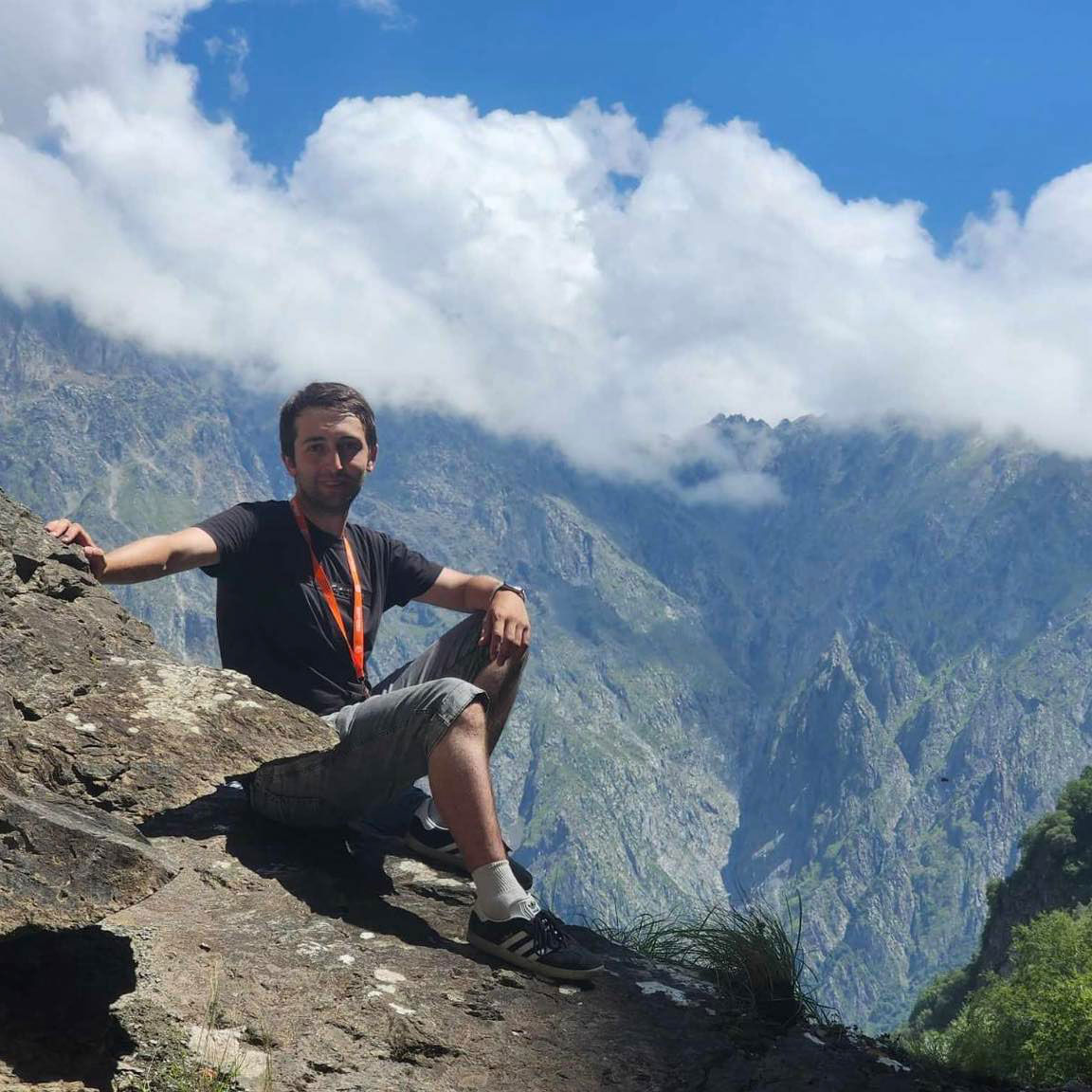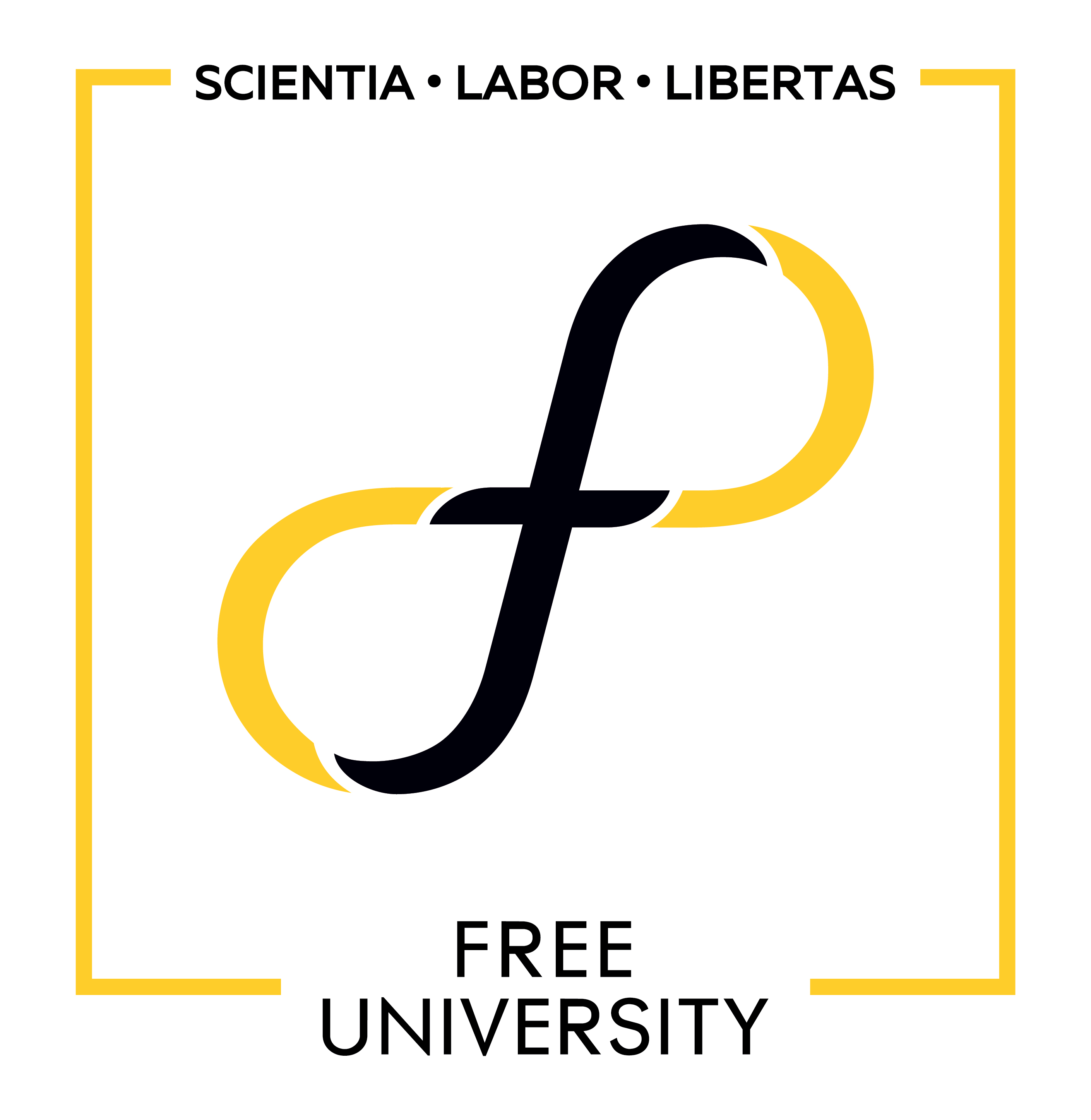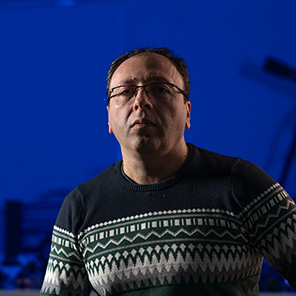School of Physics
Vazha Berezhiani
Dean of School of Physics
Courses:
Theoretical mechanics
Plasma physics
Research interests:
Laboratory and astrophysical plasmas
Nonlinear optics of complex systems
Address: Free University of Tbilisi, 240 -David Aghmashenebeli Alley, 0131 Tbilisi, Georgia
E-mail: v.berezhiani@freeuni.edu.ge
Tel.: +995 599 94 88 33
Zaza Osmanov
Associate Dean of School of Physics
Courses:
Mechanics
Thermodynamics
Electricity & Magnetism
Optics
Astrophysics & Cosmology
Research interests:
Astrophysical plasmas
Astrophysics of compact objects
Theoretical plasma physics
SETI problems
Address: Free University of Tbilisi, 240 -David Aghmashenebeli Alley, 0131 Tbilisi, Georgia
E-mail: z.osmanov@freeuni.edu.ge
Tel.: +995 579 91 08 62
George Jorjadze
Professor of School of Physics
Courses:
Mathematical analysis
Theoretical mechanics
Statistical physics
High energy physics
Mathematical methods of theoretical physics
Mathematical methods of general physics
Research interests:
Quantum field theory
Integrability and quantization of string dynamics in AdS backgrounds
List of Publications:
Address: Free University of Tbilisi, 240 -David Aghmashenebeli Alley, 0159, Tbilisi, Georgia
E-mail: g.jorjadze@freeuni.edu.ge
Tel. +995 555 961005
Nikoloz Nikuradze (2021-2025)
Publication: Monthly Notices of the Royal Astronomical Society, staf1212 (2025)
https://doi.org/10.1093/mnras/staf1212
Maximum possible energies of electrons accelerated in magnetospheres of rotating black holes
Our aim is to evaluate the maximum attainable energies of electrons accelerated by means of the magneto-centrifugal mechanism. We examine how the range of maximum possible energies, as well as the primary limiting factors, vary with black hole mass. Additionally, we analyse the dependence of the maximum relativistic factor on the initial distance from the black hole and its spin factor in the range 0.1 - 0.2. We model the acceleration of electrons on rotating magnetic field lines and apply several constraining mechanisms: the inverse Compton scattering, curvature radiation, and the breakdown of the bead-on-the-wire approximation. As a result, the maximum Lorentz factors for electron acceleration vary with the type of black hole. For stellar-mass black holes, electrons can be accelerated up to the Lorentz factors 1.3 × 103 − 1.3 × 104 with only co-rotation constrain affecting the maximum relativistic factor; In intermediate-mass black holes, the Lorentz factors are in the interval 1.3 × 104 − 1.1 × 105; For the supermassive black holes the Lorentz factors range from 7 × 104 to 1.7 × 105; while the ultra-massive black hole located at the center of Abell 1201 can accelerate electrons up to 106 with both the co-rotation and Inverse Compton in Thomson regime determining the final Lorentz factor for the last three categories.
Lazare Osmanov (2020-2024)
Publication: The European Physical Journal B, Volume 98, Issue 1, id.5 (2025)
Deciphering complexity: machine learning insights into the chaos
We introduce new machine learning techniques for analyzing chaotic dynamical systems. The main goal of this study is to develop a simple method for calculating the Lyapunov exponent using only two trajectory data points, in contrast to traditional methods that require averaging procedures. Additionally, we explore phase transition graphs to analyze the shift from regular periodic to chaotic dynamics, focusing on identifying "almost integrable" trajectories where conserved quantities deviate from whole numbers. Furthermore, we identify "integrable regions" within chaotic trajectories. These methods are tested on two dynamical systems: "two objects moving on a rod" and the "Henon-Heiles" system.
Lazare Osmanov (2020-2024)
Publication: The European Physical Journal B, Volume 95, 182 (2022)
Regular and Chaotic Motion of Two Bodies Swinging on a Rod
We investigate regular and chaotic dynamics of two bodies swinging on a rod, which differs from all the other mechanical analogies: depending on initial conditions, its oscillation could end very quickly and the reason is not a drag force or energy loss. We use various tools to analyze motion, such as Poincar´e section for quasi-periodic and chaotic cases. We calculate Lyapunov characteristic exponent by different methods including Finite Time Lyapunov Exponent analysis. Our calculations show that the maximal Lyapunov exponent is always positive except in the marginal cases when one observes quasi-periodic oscillations.
George Butbaia (2017-2021)
Publication: International Journal of Modern Physics D, Volume 30, Issue 10, id. 2150072 (2021)
FLUID DYNAMICS IN THE ELLIS WORMHOLE
In the Ellis wormhole metrics we study characteristics of fluid dynamics and the properties of linear sound waves. By implying the energy-momentum equation and the continuity equation in the general relativistic manner we examine the flow dynamics and solve the corresponding equations for a relatively simple case - radial flow. To study the linear sound waves the equations governing the mentioned physical system are linearized and solved and interesting characteristic properties are found."
George Gogaberishvili (2019-2023)
Publication: Monthly Notices of the Royal Astronomical Society, Vol. 503, 3592–3595 (2021)
Synchrotron emission from a nearby zone of Sgr A∗
Quasi-linear diffusion (QLD), driven by cyclotron instability, is proposed as a mechanism for the possible generation of synchrotron emission in the nearby zone of Sgr A∗. For physically reasonable parameters, QLD, by causing non-zero pitch angle scattering, lets electrons with relativistic factors of the order of 108 emit synchrotron radiation in the hard X-ray spectral band ∼120 keV.
Zuka Ugulava (2019-2023)
Publication: International Journal of Scientific Research in Physics and Applied Sciences, 9, 5, (2021)
The effect of motion of the respiratory droplets on propagation of viral particles.
In this work we investigate viral load propagation due to liquid droplets expelled during respiratory actions.
We describe a mechanism of the transmission of such evaporating system and analyze dependence on several ambient parameters for different respiratory processes, such as sneezing, coughing and speaking. Our study has found that a significant amount of viral load and droplets from the respiratory fluid might transfer beyond the customary 2 m distance, understanding of which might give us a better insight about regulations and risks posed by an infected individual.
George Bakhtadze (2015-2019)
Publication: International Journal of Modern Physics D, Volume 28, Issue 11, id. 1950141 (2019)
3D Study of centrifugal acceleration in isotropic photon field
In this paper we study relativistic dynamics of charged particles co-rotating with prescribed trajectories, having the shape of dipolar magnetic field lines. In particular, we consider the role of the drag force caused by the photon field the forming of equilibrium positions of the charged particles. Alongside a single particle approach we also study behaviour of ensemble of particles in the context of stable positions. As we have shown, together they create surfaces where particles are at stable equilibrium positions. In this paper we examine these shapes and study parameters they depend on. It has been found that under certain conditions there are two distinct surfaces with stable equilibrium positions.
George Bakhtadze (2015-2019)
Publication: International Journal of Modern Physics D, Vol. 26 1750135 (2017)
Centrifugal acceleration in the isotropic photon field
In this paper, we study centrifugal acceleration of particles moving along a prescribed rotating curved trajectories. We consider the physical system embedded in an isotropic photon field and study the influence of the photon drag force on the acceleration process.
For this purpose, we study three major configurations of the field lines: the straight line, the Archimedes’ spiral and the dipolar field line configuration. By analyzing dynamics of particles sliding along the field lines in the equatorial plane, we have found several interesting features of motion. In particular, it has been shown that for rectilinear field lines, the particles reach the light cylinder (area where the linear velocity of rotation exactly equals the speed of light) zone relatively slowly for bigger drag forces. Considering the Archimedes’ spiral, we have found that in cases when the field lines lag behind the rotation, the particles achieve the force-free regime of dynamics regardless of the drag force. Unlike this scenario, when the spiral is oriented in an opposite direction, the particles do not reach the force free regime, but tend to stable equilibrium locations.
Rati Goshadze (2014-2018)
Publication: Physics Letters A, Volume 383, Issue 10, p. 1027-1030 (2019)
On the Filamentation Instability in Degenerate Relativistic Plasmas.
The filamentation instability of the electromagnetic (EM) beam in an underdense plasma with high level of degeneracy is examined by means of the momentum equation, continuity equation and Maxwell’s equations. It has been demonstrated that the instability develops for weakly as well as strongly relativistic degenerate plasma in and arbitrary strong amplitude of EM beams.
Giorgi Tsereteli (2015-2019)
Publication: Physica Scripta, Volume 93, Issue 12, article id. 125601 (2018)
The role of second viscosity in the velocity shear-induced heating mechanism.
In the present paper we study the influence of second viscosity on non-modally induced heating mechanism. For this purpose we study the set of equations governing the hydrodynamic system. In particular, we consider the Navier Stokes equation, the continuity equation and the equation of state, linearise them and analyse in the context of non-modal instabilities. Unlike previous studies in the Navier Stokes equation we include the contribution of compressibility, thus the second viscosity. By analysing several typical cases we show that under certain conditions the second viscosity might significantly change efficiency of the mechanism of heating.
George Arsenadze (2015-2019)
Publication: International Journal of Modern Physics D Vol. 26 1750153 (2017)
Particles on the rotating channels in the wormhole metrics
In the Ellis–Bronnikov wormhole (WH) metrics, the motion of a particle along the curved rotating channels is studied. By taking into account a prescribed shape of a trajectory, we derive the reduced 1 + 1 metrics, obtain the corresponding Langrangian of a free particle and analytically and numerically solve the corresponding equations of motion.
We have shown that if the channels are twisted and lagged behind rotation, under certain conditions, beads might asymptotically reach infinity, leaving the WH, which is not possible for straight corotating trajectories. The analytical and numerical study is performed for two- and three-dimensional cases and initial conditions of particles are analyzed in the context of possibility of passing through the WH.
George Chanturia (2013-2017)
Publication: PHYSICS OF PLASMAS 24, 074501 (2017)
On the Raman instability in degenerate relativistic plasmas
The stimulated Raman scattering instability in a fully degenerate electron plasma is studied applying relativistic hydrodynamic and Maxwell equations. We demonstrated that the instability develops for weakly and strongly relativistic degenerate plasmas. It is shown that in the field of strong radiation, a degenerate relativistic plasma effectively responses as in the case of weak degeneracy.
Guram Mikaberidze (2011-2015)
Publications: Physics Letters A 379 2730 (2015)
Standing electromagnetic solitons in degenerate relativistic plasmas
The existence of standing high frequency electromagnetic (EM) solitons in a fully degenerate overdense electron plasma is studied applying relativistic hydrodynamics and Maxwell equations. The stable soliton solutions are found in both relativistic and nonrelativistic degenerate plasmas.
Irakli Gudavadze (2011-2015)
Publication: International Journal of Modern Physics D, Vol. 24, No. 6 1550042 (2015)
On the role of rotation in the outflows of the Crab pulsar
In order to study constraints imposed on kinematics of the Crab pulsar’s jet, we consider motion of particles along co-rotating field lines in the magnetosphere of the Crab pulsar.
It is shown that particles following the co-rotating magnetic field lines may attain velocities close to observable values. In particular, we demonstrate that if the magnetic field lines are within the light cylinder (LC), the maximum value of the velocity component parallel to the rotation axis is limited by 0.5c. This result in the context of the X-ray observations performed by Chandra X-ray Observatory seems to be quite indicative and useful to estimate the density of field lines inside the jet. Considering the three-dimensional (3D) field lines crossing the LC, we found that for explaining the force-free regime of outflows the magnetic field lines must asymptotically tend to the Archimedes spiral configuration. It is also shown that the 3D case may explain the observed jet velocity for appropriately chosen parameters of magnetic field lines.
Bachelor's Program in Physics - Description
The objective of the Free University of Tbilisi Bachelor's Program in Physics is to provide students with a comprehensive understanding of the fundamentals of physics and mathematics, as well as to cultivate skills in conducting physical experiments. Upon completion of the program, graduates not only possess foundational theoretical knowledge but also crucial practical skills. These include the ability to work with modern tools, conduct research, think analytically and solve specific tasks effectively.
Furthermore, the program aims to familiarize students with the primary domains of contemporary physics, equipping them with research skills of requisite complexity and facilitating their involvement in pertinent research endeavors. These endeavors serve as the bedrock for a successful academic trajectory, encompassing pursuits such as attaining a master's degree, pursuing a doctorate and engaging in further scientific and pedagogical endeavors at prominent international institutions or scientific centers.
In addition to fostering a successful academic career, a Bachelor of Science in Physics degree offers a robust foundation for employment in various fields, including astrophysics, geophysics, biophysics, applied physics, engineering, programming and computer modeling. Moreover, graduates of the School of Physics can pursue careers as quantitative analysts in banking and finance, as well as in management roles.
Upon successful completion of the 4-year program, the graduate is awarded the qualification - Bachelor of Science in Physics.
CURRICULUM
The curriculum for the Bachelor's Program in Physics consists of 240 credits, allocated across the following modules:
- University General Education - each student enrolled in the university's bachelor's programs, in addition to specialized subjects, also takes general subjects, contributing to the elevation of general education and the expansion of their field of interests.
- Foundational Education in the Field of Study - the module includes the foundational subjects needed to study the field of physics, for example: Mathematical Methods for General Physics, Mathematical Analysis, Tensor Calculus for Physics, Programming Methodology and others.
- Core Education in the Field of Study - the module includes the fundamental theoretical, laboratory and practical courses needed to study the field of physics. Within the module, students work on a senior project, where they learn scientific research methods and develop the skills necessary for research.
- Elective Courses - students have the flexibility to choose additional courses based on their interests. They also have the option to pursue an additional 15 credits of courses at no extra cost.
Code:
0360109 Copied!
Copied!
Cohort Size 23
| National exam | Weight | Student Places | Minimum Score |
|---|---|---|---|
| ქართული ენა და ლიტერატურა | 2 | - | - |
| უცხო ენა | 2 | - | - |
| Optional Exam | |||
| ან მათემატიკა | 8 | 16 | - |
| ან ფიზიკა | 8 | 7 | 80% |
Subjects
ქართული ენა და ლიტერატურა
Subject Weight
2Cohort Sizes
-Minimum Score
-უცხო ენა
Subject Weight
2Cohort Sizes
-Minimum Score
-ან მათემატიკა
Subject Weight
8Cohort Sizes
16Minimum Score
-ან ფიზიკა
Subject Weight
8Cohort Sizes
7Minimum Score
80%ABOUT THE SCHOOL OF PHYSICS
The Free University of Tbilisi School of Physics is the premier choice for top entrants. Students enrolled in the Bachelor's Program in Physics consistently rank among the best in the Unified National Exams, with many participating in various national and international olympiads and tournaments.
A large part of the faculty at the School of Physics is comprised of Georgian professionals with international education and experience. In addition to teaching, professors are directly and actively involved in scientific research, including participating in important international projects.
Considerable emphasis is placed on fostering scientific activities among the students of the School of Physics. For example:
- Alongside their studies, a number of students author articles published in refereed scientific publications.
- Each year, the School of Physics organizes a student conference in physics named after Kakha Bendukidze. The winners of this conference receive funding from the Knowledge Fund, a charity organization established by Kakha Bendukidze, to participate in international physics student conferences.
- A number of students are actively involved in projects funded by scientific grants obtained by professors at the School of Physics.
The high quality of education provided by the school and its alignment with international standards is evidenced by the master's/doctoral scholarships obtained by graduates at leading universities in the US and Europe. Graduates of the Bachelor's Program in Physics pursue further academic studies at esteemed international institutions such as: Binghamton University, The University of Texas at Austin, Washington University in St. Louis, University of Virginia, The University of North Carolina, University of Rochester, New York University, Texas A&M University, University of Maryland, University of Pennsylvania, The University of California, The University of Iowa, University of Bonn, KU Leuven, The Polytechnic University of Milan, Limerick Institute of Technology, The University of Rome "Tor Virgate", The University of Innsbruck, The University of Göttingen, Julich Center for Neutron Science.
Students of the Free University of Tbilisi School of Physics are afforded opportunities to participate in exchange programs with international universities. For example, students can spend a semester or undertake internships at leading institutions such as Ludwig Maximilian University of Munich (LMU), University of Texas at Austin and University of Zielona Gora.

10 July 2025
ია სარალიძე სწავლას აგრძელებს აშშ-ში, State University of New York at Binghamton-ში

08 July 2025
დავით მოდებაძე სწავლას აგრძელებს აშშ-ში, Kansas State University-ში

06 July 2025
ქეთევან არაბული სწავლას აგრძელებს სადოქტორო პროგრამაზე ბელგიაში, KU Leuven-ში

20 June 2025
ნიკა ქურდაძე სწავლას აშშ-ში აგრძელებს
Dean
Associated Dean
Coordinator







